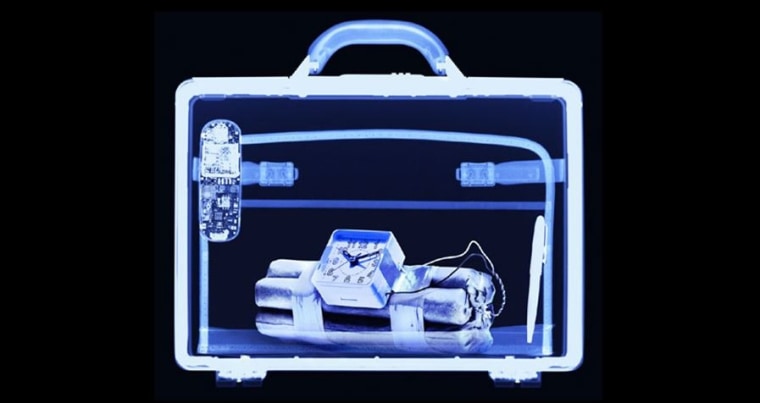Start investing in metal underwear. Scientists from Rensselaer Polytechnic Institute have found an ingenious way to replicate Superman's X-ray vision on targets over a mile away using lasers, plasma and terahertz waves.
The research could be applied to spot terrorists long before they can do any damage or determine if a parcel contains a bomb or drugs.
"Terahertz waves can only be used at close distances; ambient water in the atmosphere attenuates them after a few inches," said Jingle Liu, a professor at RPI and a co-author of the recent Nature Photonics paper that describes the research.
"We found a way to get around the water moisture problem," said Lui, and use terahertz waves for long distance scanning.
Military and homeland security officials are funding much of the T-ray research, including the RPI study, because T-rays can sense explosives and drugs as well as penetrate clothing, paper or other thin materials. T-rays also do not produce harmful, ionized radiation like X-rays.
Since T-rays are very difficult and expensive to produce, they occupied a little used part of the electromagnetic spectrum between infrared and microwave radiation until the last few years.
Since 1995, however, scientists have found ever cheaper and easier ways to produce T-rays, but they haven't quite worked out all the kinks yet.
Water molecules absorb T-rays and weaken them after only a few inches, making any kind of long-distance scanning, however desirable, extremely difficult. The RPI scientists found an ingenious way around the water vapor problem.
Rather than using terahertz waves to transmit data, the researchers instead employed them to detect information. The team then used other wavelengths of light, which are not weakened by water vapor, to bring that information back.
Here's how it works: Liu and his colleagues at RPI shoot two lasers at a target. The lasers create a localized field of terahertz waves, which penetrate clothing or other thin materials. The lasers also create a mass of ionized gas, or plasma, that reacts to the terahertz waves before they are weakened by water. The gas glows, passing on the information gleaned by the terahertz radiation.
When that information returns, it's compared with a library of other optical fingerprints. Once a match is determined, the scientists could determine whether a package contains drugs, explosives, or something more mundane and less dangerous.
Using the light from the plasma, instead of the terahertz waves themselves, to carry information was "very creative," a technique that hasn't been used before, said Michael Silevitch, a professor at Northeastern University.
While the research was done in the lab, "it's tantalizing to hope that this would work in the field. As a proof of concept idea, it's very exciting," he added.
The next step is to test the technique in the field, said Liu. The effect currently works up to 67 feet away, the limit of the laboratory.
In theory the process should work hundreds or even thousands of feet away, said Liu. However, the team still needs to verify that, which they hope to do after they have made a portable version of their device.
